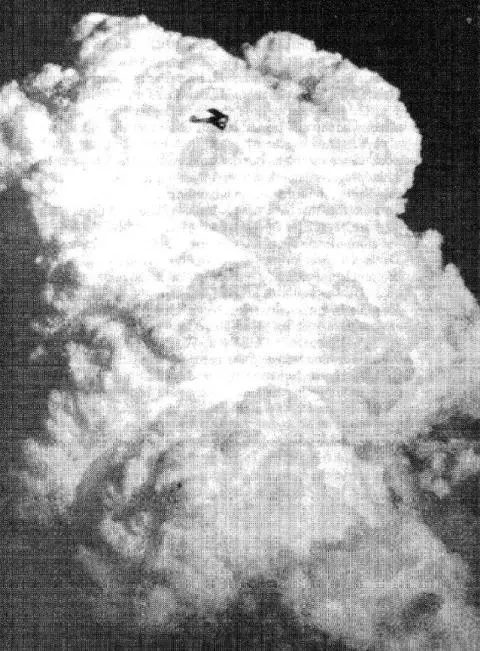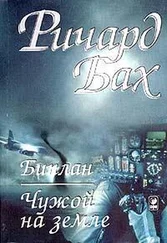Ричард Бах - Biplane
Здесь есть возможность читать онлайн «Ричард Бах - Biplane» весь текст электронной книги совершенно бесплатно (целиком полную версию без сокращений). В некоторых случаях можно слушать аудио, скачать через торрент в формате fb2 и присутствует краткое содержание. Город: New York, Год выпуска: 2012, ISBN: 2012, Издательство: Scribner, Жанр: Современная проза, на английском языке. Описание произведения, (предисловие) а так же отзывы посетителей доступны на портале библиотеки ЛибКат.
- Название:Biplane
- Автор:
- Издательство:Scribner
- Жанр:
- Год:2012
- Город:New York
- ISBN:978-1-4516-9744-5
- Рейтинг книги:3 / 5. Голосов: 1
-
Избранное:Добавить в избранное
- Отзывы:
-
Ваша оценка:
- 60
- 1
- 2
- 3
- 4
- 5
Biplane: краткое содержание, описание и аннотация
Предлагаем к чтению аннотацию, описание, краткое содержание или предисловие (зависит от того, что написал сам автор книги «Biplane»). Если вы не нашли необходимую информацию о книге — напишите в комментариях, мы постараемся отыскать её.
Biplane — читать онлайн бесплатно полную книгу (весь текст) целиком
Ниже представлен текст книги, разбитый по страницам. Система сохранения места последней прочитанной страницы, позволяет с удобством читать онлайн бесплатно книгу «Biplane», без необходимости каждый раз заново искать на чём Вы остановились. Поставьте закладку, и сможете в любой момент перейти на страницу, на которой закончили чтение.
Интервал:
Закладка:
Keith flew by the book. In formation, his airplane did not bounce or rock from side to side. It was as solid as if it had been bolted to the wing of the lead airplane. Then the mission, the air combat, would begin. And then, of course, look out.
Flying straight up, flying straight down, rolling streaking twisting flashing through the sky whirled the airplane that you would have sworn had Keith Ulshafer aboard when it left the ground. It was as though Keith had hopped quickly out before takeoff and some wild stranger had gotten in. You felt like pressing the microphone button and asking, “You all right, Keith?”
Keith was all right, and with luck and with attention and with very great skill you might be able to dodge the incredible monster at the controls of his airplane. On other missions of combat, it was always there. Here comes Keith, blazing down on the strafing target, the ground disintegrating in front of him; here he is closing on the Dart, towed for target practice, and blowing the silver thing out of the sky; down he drops on the rocket target and puts four rockets in a fifteen-foot circle. On close air support missions in the war games, Keith comes blasting in just high enough to clear the tanks’ whip antenna, pulling up after the last pass in a flawless set of matched aileron rolls, disappearing into the sun. In the landing pattern he flies close and tight to the runway, touching his wheels precisely on the line painted as a touchdown target. Then, while the armorers de-arm the guns, the wildman jumps down from the cockpit, runs into the woods, and the other Keith Ulshafer, the technical-journal correspondent, strolls back in and he takes off his jacket and he unzips his G-suit.
There is, I am learning, sleeping within us all, a person who lives only for times of instant decision and quick-blurring action. I saw him a year ago in Keith’s wildman, I met him yesterday as a gambler in my biplane. In all of us this person sleeps, in the most unlikely person that logic could pick.
* * *
Over Texas, the pine trees are falling back and the plains begin to open ahead. The sun at last is warm in the air and the tailwind holds good; even the fastest automobiles are whisking backward beneath the wings.
I can see the tailwind, when I close my eyes, and I can see the biplane, a tiny dot borne along in it. The tailwind is only one eddy in a huge whirlpool of moving air, a whirlpool turning clockwise about a great center of high pressure somewhere to the north. An airplane flying at this moment in precisely the same direction as I, but north of that center, would be struggling through headwinds. My tailwind cannot hold, of course. I am flying away from the center, and even though I move only a little over one hundred miles per hour I will be able to see the winds begin to change about me before too long. Already, in two hours of flying, the wind has changed from a direct tailwind to a tailwind quartering slightly from the south. In another few hours it will be a crosswind from the south, drifting me to the right of course, and I shall have to fly as low as possible to avoid its ill effects.

Beware the winds that drift you to the right, I have learned. The maxim: “Drift Right into Danger.” To drift to the right is to leave the zone of high pressure and good weather and to enter the frowning centers of low pressure and lowering clouds and visibility diminishing down to a mist in the sky. If I turned now just a little to the right, to keep the wind directly on my tail, I could begin a circle that would keep me always in clear weather; I would fly a circle with the whirlpool, about the high. But I would end where I began. To make progress along a course, I must expect a storm or two. But I am grateful for the good already received, the days of pure weather that have attended us. And still it holds; as far as I can see, there is no sign of lowering weather ahead.
Before me on the plain, the first smudge of a city rising. Dallas. Or more properly, Dallas/Fort Worth. Gradually it lifts and looms clearer, a giant sprawled in the sunlight. I shift course to the south, to avoid flying over the city. It should look like any other city from the air, but it does not. I cannot look at Dallas objectively. There has been a furious battle raging over airports in Dallas/Fort Worth. Each claims to have the airport most suited to the needs of both cities, and at last the government had to step in and mediate the case. Much name calling going on down there, and bad feeling among those who used to fly and are now the operators of Large Steel Desks with “Airport Official” written in nameplates.
Beyond that, the city is a big depressing place, and there is even a sad tone in the sound of the engine, a going-lower sound from the cylinders. This is the city where the President was shot. I am glad that I do not have to land.
The mood of the countryside brightens a bit when the city has fallen out of sight behind, and I find U.S. Highway 80, which will be my primary navigation aid for the next thousand miles. Somewhere soon I should think about landing. Western Hills, it says on the map, and I fly one circle about a little town and its airport. It is 8:30 in the morning, but there is not a sign of life on the field. The hangars are closed, the parking lot is empty. I will surely have to wait for fuel. I have made good time in the wind and down the road will be another airport at which someone is stirring. Besides, every mile behind is one less mile ahead. Considering this rather basic maxim of the traveler in the open cockpit, I settle down once again with the W of the magnetic compass bobbling under the reference line. By now the wind is a full crosswind and there is nothing to be gained by remaining at altitude. Forward on the stick, then, and down we come into the layer of the sky where the wind is slowed by its contact with the ground. We level fifty feet in the air above the deserted highway and rise and fall with the contour of the low hills.
Here and there an automobile on the road, and I get to know each one well, for I do not pass them so quickly now. A station wagon built sometime way ahead in the years to come, with children who haven’t yet been born crowding the rear windows. I wave to them, across time and across five hundred feet of Texas air, and receive in return a little forest of waving hands. It is comforting to see other people moving through this space, and I cannot help but wonder what the others think as they look back into 1929. Does it remind them? Do they remember the days when they crossed this very road (it was a dirt road then) and along about there in the sky was an airplane just like that one that is there now? And it pulled slowly ahead and it vanished gradually to the left of the road, just as that one is vanishing?
I fly the up-sun side of the road from habit, and I wonder if that was a habit in the first days of flight. Probably not. Fly up-sun and they can’t read your number. A defensive sort of habit, that. But I think it has saved me trouble now and then. There are not many people who know that it is perfectly permissible for an airplane to fly at less-than-treetop height in uninhabited land. If someone were not feeling happy about old airplanes, they could catch my big registration number and cause me to have to prove my innocence. The regulations say only that I must fly five hundred feet from any person on the ground; whether the five hundred feet is over or to one side of him makes no difference. Now, avoiding the wind and with plenty of smooth places to land, I choose to fly five hundred feet to one side of. The up-sun side.
When the road is clear, I fly over till my wheels straddle the centerline and I sit up tall in the seat and crane over the windscreen and over the long nose and just enjoy flying low. The telephone poles whisk by, and by resting one elbow on the rim of the cockpit I feel again almost as if I am driving an automobile. With the one fine difference of being able to touch back on my steering control and go roaring straight up into the sky.
Читать дальшеИнтервал:
Закладка:
Похожие книги на «Biplane»
Представляем Вашему вниманию похожие книги на «Biplane» списком для выбора. Мы отобрали схожую по названию и смыслу литературу в надежде предоставить читателям больше вариантов отыскать новые, интересные, ещё непрочитанные произведения.
Обсуждение, отзывы о книге «Biplane» и просто собственные мнения читателей. Оставьте ваши комментарии, напишите, что Вы думаете о произведении, его смысле или главных героях. Укажите что конкретно понравилось, а что нет, и почему Вы так считаете.





